The low-block is one of the most recognizable and widely used defensive strategies in football. Known for its disciplined, compact shape and deep positioning, the low-block is often deployed by teams looking to protect their goal and limit the attacking opportunities of their opponents. This approach has been used for decades, and while it is often associated with defensive-minded teams, its strategic implementation can be a masterclass in tactical intelligence.
In this article, we will explore the ins and outs of the low-block: its key principles, the formations that suit it best, when it is most effectively used, how teams defend their penalty area within a low-block, and the challenges it poses to both the defending and attacking sides.
What is a Low-Block?
The low-block is a defensive strategy where a team sets up most of its players in the defensive third of the pitch. The primary aim is to protect the goal by restricting space for the opposition to exploit, forcing them to either play around the block or resort to long-distance shots. Unlike a high block, which focuses on winning the ball back quickly higher up the pitch, the low-block prioritizes staying compact and organized near the goal.
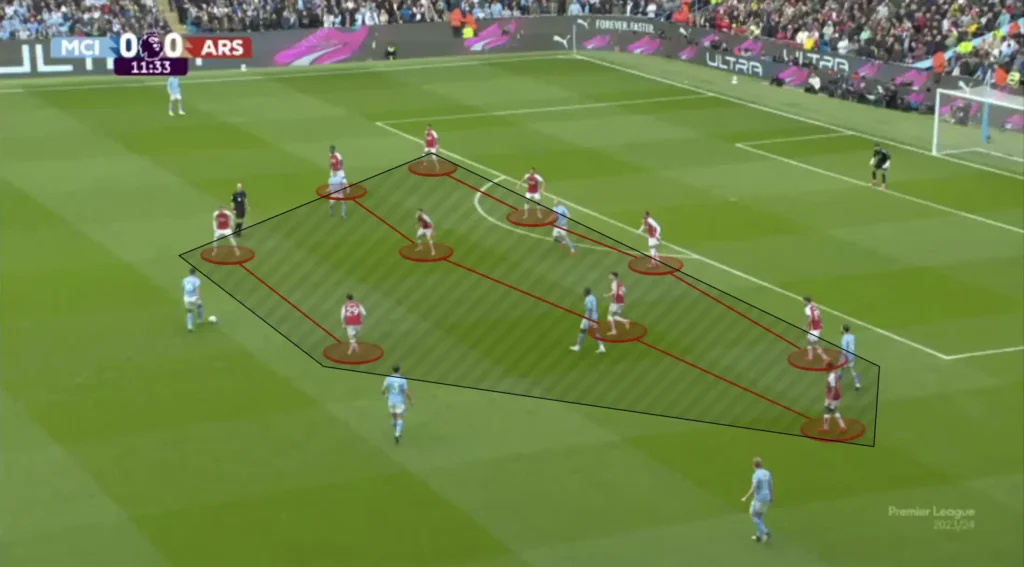
The term “low-block” comes from the idea of compressing the defensive lines – defenders, midfielders, and sometimes even forwards – into a tight, compact zone close to the penalty area. This setup frustrates attacking teams, disrupts their rhythm, and denies them the space needed to create quality chances.
When is a Low-Block Used?
- Against Stronger Opponents
Teams often use a low-block when facing technically superior opponents. By defending deep, they minimize the space available for the opposition’s attackers and force them to break down a well-organized defensive unit. - To Protect a Lead
A low-block is a natural choice for teams looking to protect a slim advantage. By retreating into their defensive third, they prioritize preventing goals rather than chasing another. - In Tactical Game Plans
Even teams known for attacking football may adopt a low-block in specific scenarios. For example, in away matches or during the latter stages of knockout competitions, teams may prioritize defensive solidity.
Key Principles of a Low-Block
- Compactness
A low-block relies on keeping the team shape compact both horizontally and vertically. Players stay close to each other, closing down gaps that attacking teams might exploit. The reduced distance between lines prevents dangerous passes through the midfield or into the penalty area. - Defensive Cohesion
Teams using a low-block must operate as a cohesive unit. Communication is vital as players shift together to cover space and apply pressure in specific areas without losing shape. Any individual stepping out of position can create vulnerabilities. - Limiting Space in Key Zones
The low-block focuses on closing down central areas, particularly the spaces between the defensive and midfield lines. This denies creative playmakers the opportunity to operate in dangerous zones and forces the opposition to play wide or take less threatening shots from distance. - Patience and Discipline
Defenders in a low-block must stay patient and resist the temptation to press aggressively or chase the ball. Maintaining positional discipline is crucial, as even a single lapse can lead to a defensive breakdown. - Effective Transitions
While the low-block is a defensive tactic, it often relies on quick transitions to attack. Once the ball is won, teams can launch counterattacks, exploiting the space left behind by the opposing team’s attacking setup.
Formations Commonly Used in a Low-Block
The low-block is not tied to a single formation but is instead a flexible concept that can be applied to various setups. Common formations for deploying a low-block include:
1-4-4-2: This classic shape provides defensive width and compactness, with two banks of four players protecting the goal. It is effective in denying space in central areas and is relatively simple for players to understand and execute.
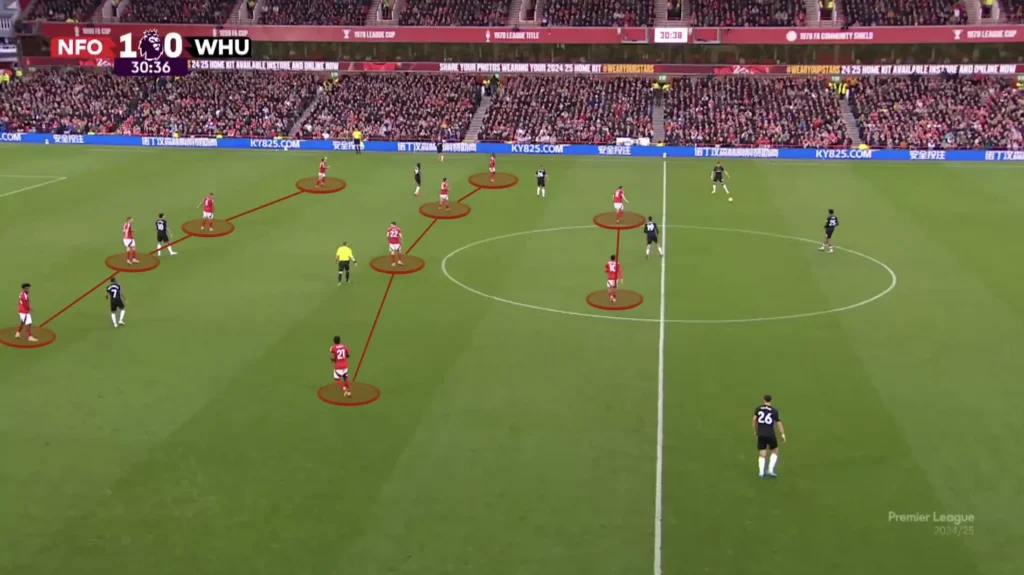
1-5-3-2: This formation adds an extra center-back, providing more coverage against crosses and through balls. The strikers and central midfielders naturally block the center, forcing the opposition to progress the ball through the flanks. The wing-backs can also tuck in to provide additional defensive solidity.
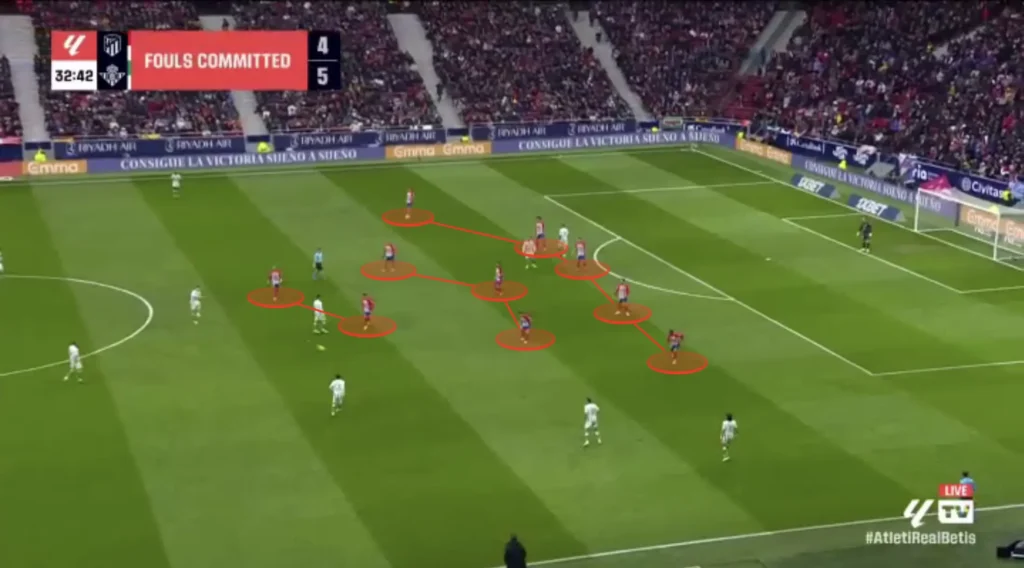
1-4-5-1: With five midfielders in front of the back four, this setup offers excellent control in central areas, making it hard for the opposition to play through.
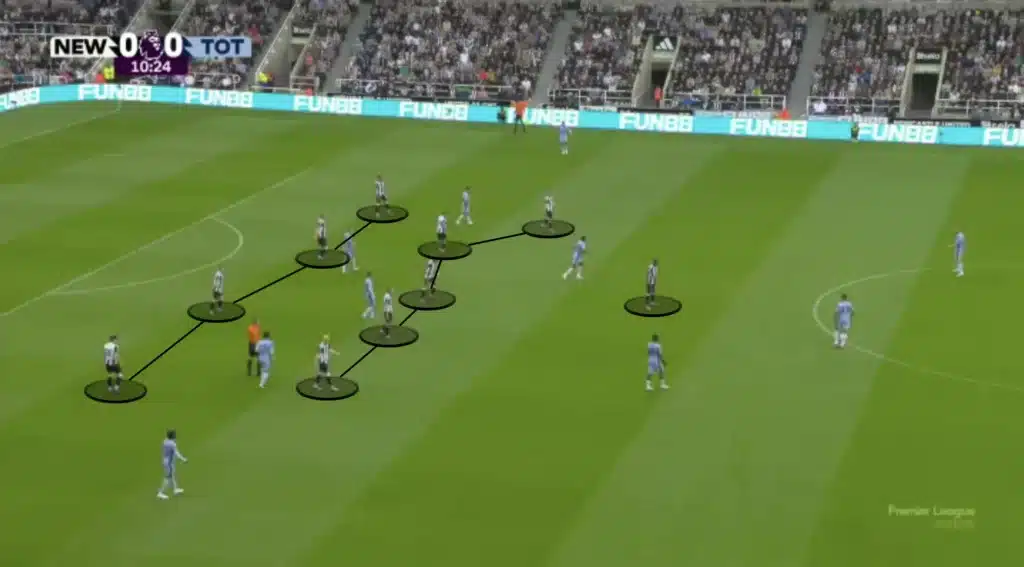
1-5-4-1: This formation is perhaps the most defensive with many players low down the pitch. The wingers and wing-backs provide cover in wide areas while the three center-backs can support the midfielders in the center.
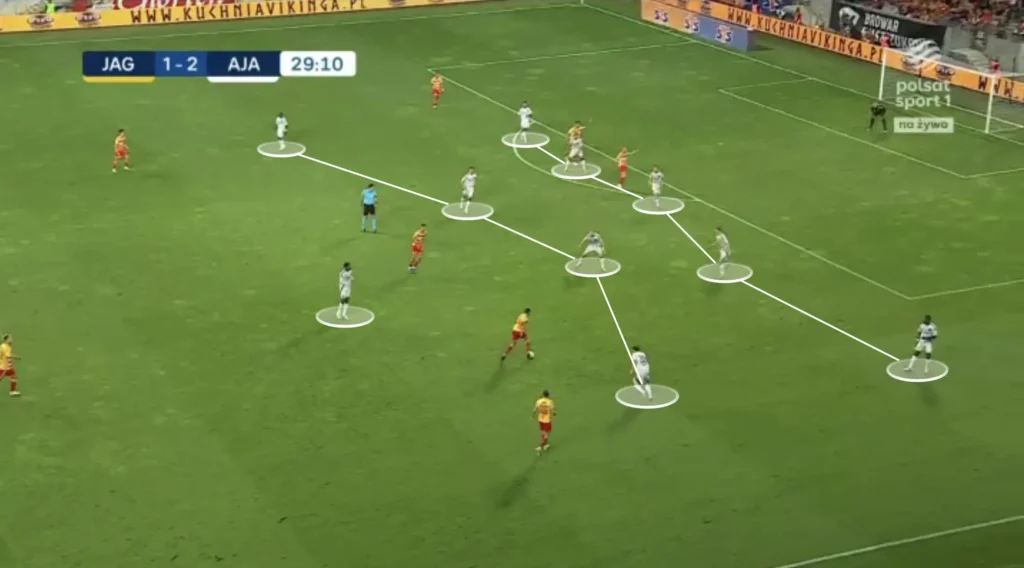
Each of these formations can be adjusted based on the team’s strengths, the opponent’s tactics, and the game situation.
Defending the Penalty Area in a Low-Block
A key component of the low-block is defending the penalty area effectively. Since the opposition will often try to penetrate the block or deliver crosses into the box, the defending team must be prepared to deal with these threats.
1. Protecting the Goal Zone
The most crucial area to defend in a low-block is the zone directly in front of the goal(the golden-zone). Center-backs take up positions to block shots, intercept crosses, and win aerial duels. Midfielders drop deeper to provide additional coverage, ensuring the penalty area remains congested and difficult for attackers to exploit.
2. Marking and Tracking Runners
Players in a low-block must make sure to always track opposition runners. Forwards and midfielders often look to make late runs into the penalty area to get on the end of crosses or cut-backs. Proper communication and positional awareness are essential to prevent these runners from finding space.
3. Blocking Shots
Shot blocking is a fundamental skill when defending the penalty area in a low-block. Defenders need to position themselves to close down shooting angles and put their bodies on the line to block attempts on goal.
4. Dealing with Crosses
Crosses are a common weapon used by teams trying to break down a low-block. Defenders must be organized in their positioning, with one player contesting the aerial duel and others covering the second ball. Goalkeepers also play a crucial role, commanding their area and coming out to claim crosses when necessary.
5. Staying Compact Under Pressure
As the attacking team increases its intensity and commits more players forward, the low-block must remain compact and disciplined. Players must resist the urge to chase the ball or leave their positions, as this can create gaps for the opposition to exploit.
Strengths of a Low-Block
- Defensive Solidity: The compact shape reduces space for attackers and makes it difficult for the opposition to create clear chances.
- Counterattacking Potential: Teams in a low-block can exploit the space left behind by attacking teams when they win the ball back.
- Energy Efficiency: A low-block requires less running than a high press, making it suitable for teams with limited stamina or in matches where energy conservation is key.
Weaknesses of a Low-Block
- Invites Pressure
A low-block allows the opposition to dominate possession and territory, which can lead to sustained pressure and eventual breakdowns. - Limited Offensive Options
With most players committed to defense, counterattacks often depend on a few isolated players. Breaking out of the block to score can be challenging. - Susceptibility to Long Shots
While a low-block is effective at protecting the central areas, it can sometimes leave space for long-range shots if the block drops too deep.
Conclusion
The low-block is a cornerstone of defensive football tactics. While it may seem simple, executing a low-block requires immense discipline, communication, and teamwork. It frustrates opponents, limits their scoring opportunities, and offers teams a platform to strike back on the counterattack. However, it also comes with challenges, as it demands a high level of concentration and invites sustained pressure from the opposition.
By mastering the principles of the low-block and understanding its strengths and weaknesses, coaches and players can effectively deploy this strategy to compete at the highest level. Whether it’s a last-ditch effort to protect a lead or a calculated plan against a stronger opponent, the low-block remains one of football’s most effective and enduring tactical tools.
